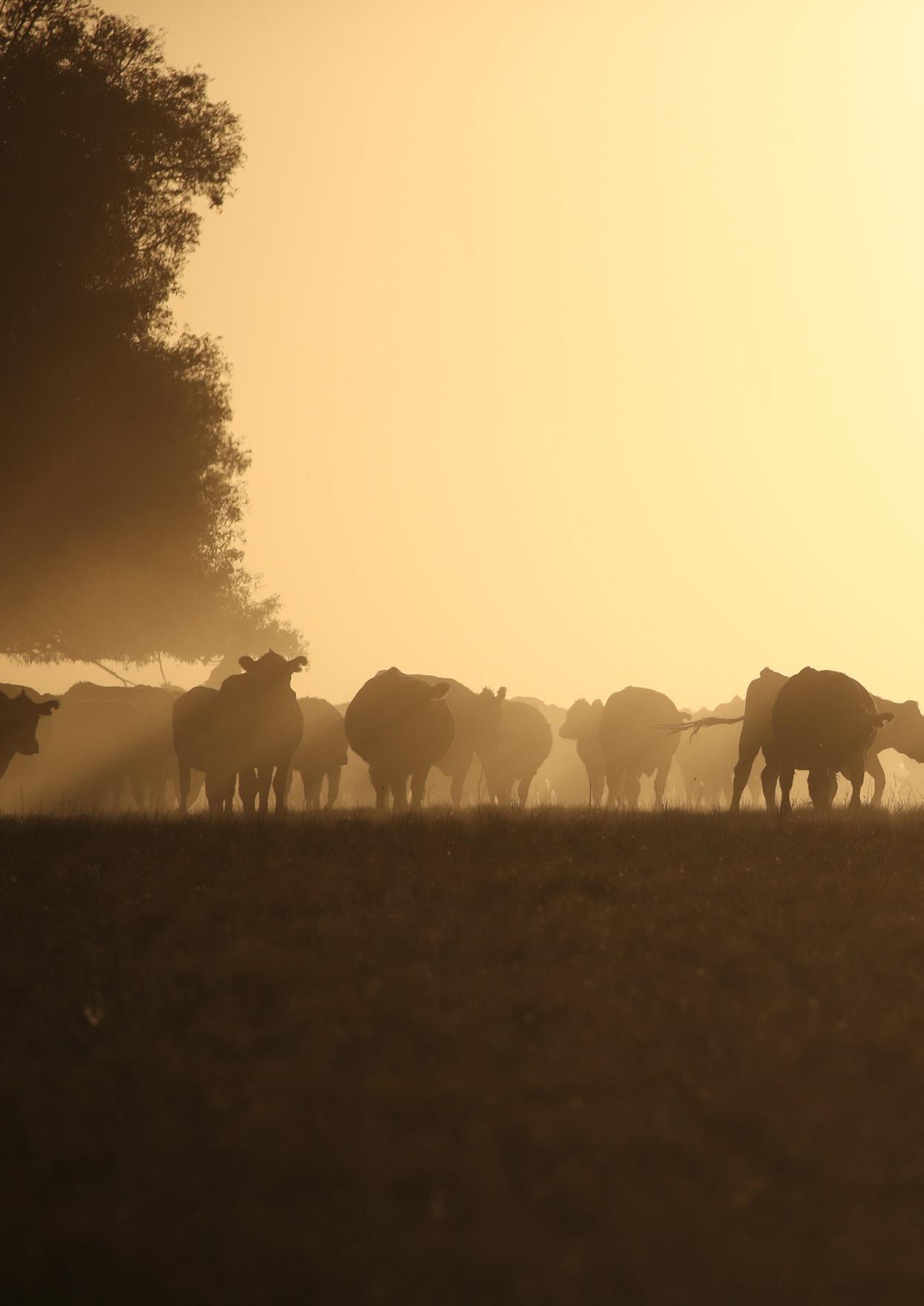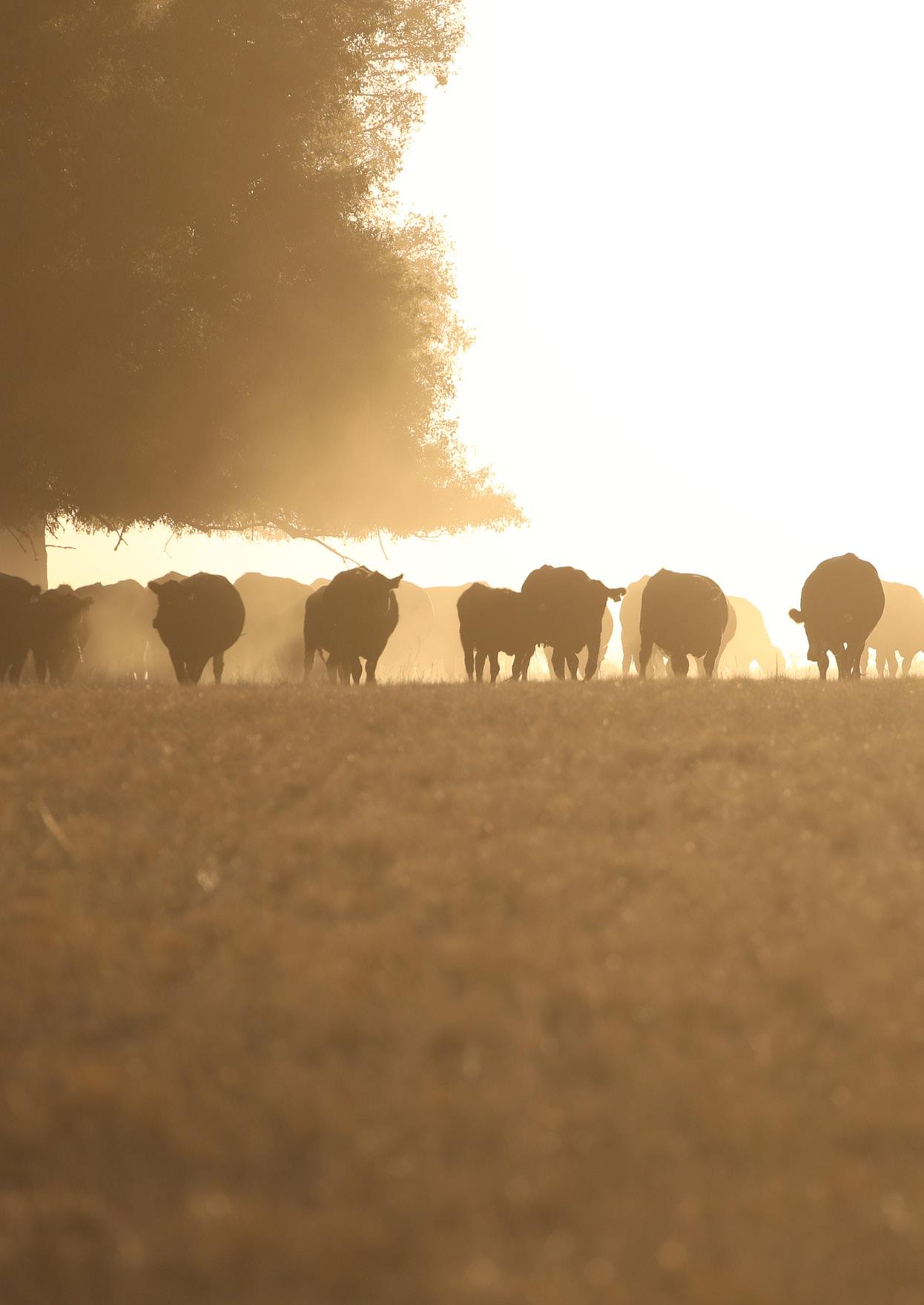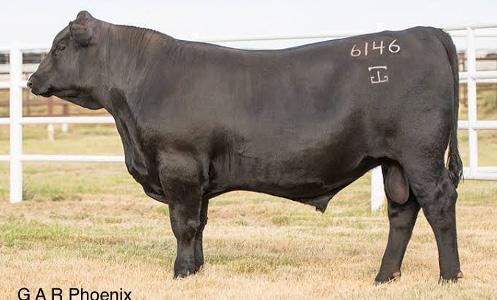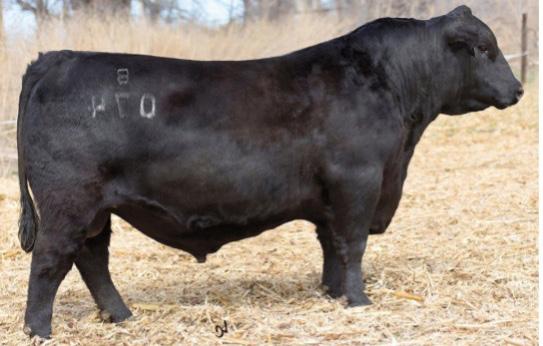INAUGURAL BULL SALE FRIDAY 31ST MARCH 2023

Condobolin Saleyards, NSW | Commencing 2pm
www.wrigleycattleco.com.au


Condobolin Saleyards, NSW | Commencing 2pm
www.wrigleycattleco.com.au
Interfaced with
LOCATION:
Our Inaugural sale will be conducted in the Condobolin Saleyards. We had planned to have our first auction on farm but unfortunately the floods in November and December 2022 put a stop to that. The saleyards are located on the corner of Burnett and Maitland Street, Condobolin, New South Wales.
LUNCH:
Food and beverages will be provided on the day.
The bulls will be auctioned with a video on big screens and be interfaced with auctions plus. Further information about how to register online and access to the bull videos, refer to following pages.
INSPECTIONS:
Pre-sale inspections are very welcome. Please contact Andrew (0427 962 902) or Charlie (0408 217 451). The bulls can be inspected on sale day from 10am onwards.
DELIVERY:
Wrigley Cattle Co offer free delivery in NSW, QLD & VIC. We will do our best to land them on your property however if this is not possible, they will be delivered to your closest regional centre. Other delivery options can be arranged on the day.

· APR and HBR registered with Angus Society of Australia

· Fully performance recorded and genomically tested
· Soundness and fertility tested by Ced Wise
· Independently structurally assessed by Jim Green
Selling Agents:
Kevin Miller, Whitty, Lennon and Company
Luke Whitty – 0427 524 442
Brendon White - 0429 627 837
Sam Parish – 0418 832 086
Jack Whitty – 0407 668 669
BULL TRANSFER:
Enquires:
Andrew Wrigley - 0427 962 902
Charlie Wrigley - 0408 217 451
E: anwrigley@bigpond.com
W: www.wrigleycattleco.com.au
Bulls will be transferred by our team. Please provide PIC (property identification number) on registration and buyers slip.
ACCOMMODATION:
Please get in touch with us if you need accommodation. We have rooms organised in Condobolin.
Allambie Motel
21 William Street, Condobolin NSW (02) 6895 2722
AGENT REBATE:
Railway Hotel
46 Molong Street, Condobolin NSW (02) 6895 2650
A rebate of 2% will be offered to outside agents attending the sale and introducing clients.
To qualify for this rebate, agents must:
· Introduce the client by email prior to the sale or attend the sale
· Settle within 7 days
SALE VIDEOS:
Videos of all sale bulls are available for viewing on our website.
After more than thirty years of producing bulls for private treaty and a decade of contract bull breeding, it gives us great pleasure to welcome you to our inaugural auction. We would like to give a very big thankyou to all friends and clients who have supported us over the years.
For those of you who don’t know us well, our goal is to produce bulls that are not only competitive on paper but more importantly perform in the paddock. Over the last 30 years, the use of Breedplan and comprehensive data collection has enabled significant gains in our breeding fundamentals of calving ease, growth and carcase. On the back of this foundation, our aim is to provide you with “functional bulls that achieve your goals in your environment”. We thank you for your support today and hope you find value in our bulls.
Kind Regards, Andrew, Natascha, Charlie and Anika Wrigley.
In the late 80s we began breeding commercial Angus cattle and quickly recognized we needed reasonable numbers of high-quality, high-performance bulls so the seed stock side of our business was born.
With the experience gained in our Angus operation, in 2005 we also began breeding Santa Gertrudis seed stock for S. Kidman & Co. under contract. This gave us invaluable experience inseminating and performance recording large numbers of cows, selling between 300 to 400 bulls annually. We succeeded in lifting key performance indicators for that herd.



At the completion of the Kidman contract and the Wrigley family succession plan, our focus returned to Angus seed stock. Today the stud is run in conjunction with a commercial herd and cropping operation. We are also passionate cutting horse breeders and competitors. We offer friendly, approachable family service designed to build long haul relationships, always finding time to talk cattle.



We are focused on breeding well balanced animals that are at the pointy end of the key production values.
It is important to us that our cattle add value right through the production system. The average EBVs of our sale bulls are well above the Angus breed average in most traits. The indexes that are displayed highlight the bulls ability to generate profit in a self-replacing cow calf herd and a self-replacing cow calf herd that places more emphasis on a higher marbled carcase. As a group this year’s sale bulls are easy calvers that will see progeny grow and deliver a good product at the end.




All bulls have had the following treatment and data collected. This is to insure they are fit to work and their EBV’s are of high accuracy.
· Birth Weight and Date of Birth Recorded
· Tissue sample for parent verification and genomics
· 200-day, 400-day, 600-day weighed
· Mother cows weighed and hip height measured for mature cow data Docility scored
7 in 1, Pestiguard, Piligard and Vibriosis Vaccinations
· Ultrasound muscle and fat scans (rib & P8, EMA & IMF)
· Scrotal measured
· Independent structural assessment – claw set, foot angle, leg conformation, sheath & temperament
· Soundness and Fertility Tested - Morphology & Motility
Introducing new bulls to your existing sires, is a prime time for accident and injury. We have found that when getting new bulls home, socialising them with some other cattle such as steers helps them to settle in. If they have to be joined with other bulls it’s a good idea to let them become familiar with each other through a strong fence until all the huffing and puffing settles. This usually takes a couple of weeks. Then introduce them to their new work mates without any females around before joining them to the mob. While it isn’t always possible, having adequate feed and area for each bull will maintain a happier sire group. These are some measures we take to limit the possibilities of injury however we strongly recommend that any bulls purchased are insured.
To make sure your bulls perform in the paddock they have been vet checked and morphology tested by Ced Wise of Ced Wise AB services and structurally assessed by Jim Green, Greens Livestock Services. Wrigley Cattle Co. guarantees the fertility and structural soundness of all sale bulls for 12 months. If a bull is structurally unsound, infertile, or deemed incapable to serve for any reason other than disease, injury, mismanagement or neglect, Wrigley Cattle Co will provide you with a credit equal to the purchase price less salvage value of the bull. To claim this guarantee you must provide a written report from a veterinarian approved by Wrigley Cattle Co and be lodged within 12 months from sale day. We recommend any bulls you purchase are insured for accident or injury.
All reasonable care has been taken to ensure that the information provided in this catalogue is correct. However neither the vendors, selling agents or representatives thereof assume any responsibility whatsoever for the correctness, use or interpretation of the information on animals included in this catalogue.
PV: both parents have been verified by DNA, SV: the sire has been verified by DNA, DV: the dam has been verified by DNA, #: DNA verification has not been conducted
E: DNA verification has identified that the sire and/or dam may possibly be incorrect, but this cannot be confirmed conclusively
Animal details included in this catalogue, including but not limited to pedigree, DNA information, Estimated Breeding Values (EBVs) and Index values, are based on information provided by the breeder or owner of the animal. Whilst all reasonable care has been taken to ensure that the information provided in this catalogue was correct at the time of publication, Angus Australia will assume no responsibility for the accuracy or completeness of the information, nor for the outcome (including consequential loss) of any action taken based on this information.
The bulls have been structurally assessed by Jim Green of Greens Livestock Services on the 2/02/2023.
The Beef Class Structural Assessment System uses a 1-9 scoring system for feet and leg structure:

· A score of 5 is ideal
· 4 and 6 show slight variation from ideal, but this includes most animals.
· Any animal scoring 4 and 6 would be acceptable in any breeding program
· 3 and 7 shows greater variation, but would be acceptable in most commercial breeding programs, however seedstock producers should be wary
2 and 8 are low scoring animals and have been culled
Reference: 1-5 (half scores permitted) using yard test scale below:
1. Docile
The animal is easily held in the corner and the handler can get close enough to put their stick on the animal.
2. Restless
The animal can be held in the corner but exhibits some restlessness and flicking of the tail. The handler cannot get close enough to put their stick on the animal before it moves away.
3. Nervous
The animal is not easily held in the corner even when the handler is some distance back from the animal, continual movement and tail flicking.
4. Flighty (wild)
The animal cannot be held in the corner, frantically runs the fence line and may jump when penned individually, exhibits long flight distance.
5. Aggressive
Similar behavior to score 4 but is also aggressive towards the handler, stares at the handler and threatens to charge or charges (Handler is advised to exit the yard before the animal actually charges).
All Wrigley Cattle Co bulls have been independently structurally assessed to maximise the quality of stock offered.

The TransTasman Angus Cattle Evaluation is the genetic evaluation program adopted by Angus Australia for Angus and Angus influenced beef cattle. The TransTasman Angus Cattle Evaluation uses Best Linear Unbiased Prediction (BLUP) technology to produce Estimated Breeding Values (EBVs) of recorded cattle for a range of important production traits (e.g. weight, carcase, fertility).
The TransTasman Angus Cattle Evaluation is an international genetic evaluation and includes pedigree, performance and genomic information from the Angus Australia and Angus New Zealand databases, along with selected information from the American and Canadian Angus Associations.
The TransTasman Angus Cattle Evaluation utilises a range of genetic evaluation software, including the internationally recognised BLUPF90 family of programs, and BREEDPLAN beef genetic evaluation analytical software, as developed by the Animal Genetics and Breeding Unit (AGBU), a joint institute of NSW Agriculture and the University of New England, and Meat and Livestock Australia Limited (MLA).
An animal’s breeding value can be defined as its genetic merit for each trait. While it is not possible to determine an animal’s true breeding value, it is possible to estimate it. These estimates of an animal’s true breeding value are called EBVs (Estimated Breeding Values).
EBVs are expressed as the difference between an individual animal’s genetics and a historical genetic level (i.e. group of animals) within the TACE genetic evaluation, and are reported in the units in which the measurements are taken.
TACE EBVs can be used to estimate the expected difference in the genetics of two animals, with the expected difference equating to half the difference in the EBVs of the animals, all other things being equal (e.g. they are joined to the same animal/s).
For example, a bull with a 200 Day Growth EBV of +60 would be expected to produce progeny that are, on average, 10 kg heavier at 200 days of age than a bull with a 200 Day Growth EBV of +40 kg (i.e. 20 kg difference between the sire’s EBVs, then halved as the sire only contributes half the genetics).
Or similarly, a bull with an IMF EBV of +3.0 would be expected to produce progeny with on average, 1% more intramuscular fat in a 400 kg carcase than a bull with a IMF EBV of +1.0 (i.e. 2% difference between the sire’s EBVs, then halved as the sire only contributes half the genetics).
USING EBVS TO BENCHMARK AN ANIMAL’S GENETICS WITH THE BREED
EBVs can also be used to benchmark an animal’s genetics relative to the genetics of other Angus or Angus infused animals in Australia. To benchmark an animal’s genetics relative to other Angus animals, an animal’s EBV can be compared to the EBV reference tables, which provide:
· the breed average EBV
· the percentile bands table
The current breed average EBV is listed on the bottom of each page in this publication, while the current EBV reference tables are included at the end of these introductory notes.
For easy reference, the percentile band in which an animal’s EBV ranks is also published in association with the EBV.
An accuracy value is published with each EBV, and is usually displayed as a percentage value immediately below the EBV. The accuracy value provides an indication of the reliability of the EBV in estimating the animal’s genetics (or true breeding value), and is an indication of the amount of information that has been used in the calculation of the EBV.
EBVs with accuracy values below 50% should be considered as preliminary or of low accuracy, 50-74% as of medium accuracy, 75-90% of medium to high accuracy, and 90% or greater as high accuracy.
EBVs are calculated for a range of traits within TACE, covering calving ease, growth, fertility, maternal performance, carcase merit, feed efficiency and structural soundness. A description of each EBV included in this publication is provided below.
CEDir % Genetic differences in the ability of a sire’s calves to be born unassisted from 2 year old heifers.
CEDtrs % Genetic differences in the ability of a sire’s daughters to calve unassisted at 2 years of age.
GL days Genetic differences between animals in the length of time from the date of conception to the birth of the calf.
BW kg Genetic differences between animals in calf weight at birth.
200 Day kg Genetic differences between animals in live weight at 200 days of age due to genetics for growth.
400 Day kg Genetic differences between animals in live weight at 400 days of age.
600 Day kg Genetic differences between animals in live weight at 600 days of age.
Higher EBVs indicate fewer calving difficulties in 2 year old heifers.
Higher EBVs indicate fewer calving difficulties in 2 year old heifers.
Lower EBVs indicate shorter gestation length.
Lower EBVs indicate lighter birth weight.
Higher EBVs indicate heavier live weight.
Higher EBVs indicate heavier live weight.
Higher EBVs indicate heavier live weight.
MCW kg Genetic differences between animals in live weight of cows at 5 years of age. Higher EBVs indicate heavier mature weight.
Milk kg Genetic differences between animals in live weight at 200 days of age due to the maternal contribution of its dam.
DtC days Genetic differences between animals in the time from the start of the joining period (i.e. when the female is introduced to a bull) until subsequent calving.
SS cm Genetic differences between animals in scrotal circumference at 400 days of age.
CWT kg Genetic differences between animals in hot standard carcase weight at 750 days of age.
EMA cm2 Genetic differences between animals in eye muscle area at the 12/13th rib site in a 400 kg carcase.
Rib Fat mm Genetic differences between animals in fat depth at the 12/13th rib site in a 400 kg carcase.
P8 Fat mm Genetic differences between animals in fat depth at the P8 rump site in a 400 kg carcase.
RBY % Genetic differences between animals in boned out saleable meat from a 400 kg carcase.
IMF % Genetic differences between animals in intramuscular fat (marbling) at the 12/13th rib site in a 400 kg carcase.
NFI-F kg/ day Genetic differences between animals in feed intake at a standard weight and rate of weight gain when animals are in a feedlot finishing phase.
Doc % Genetic differences between animals in temperament.
Higher EBVs indicate heavier live weight.
Lower EBVs indicate shorter time to calving.
Higher EBVs indicate larger scrotal circumference.
Higher EBVs indicate heavier carcase weight.
Higher EBVs indicate larger eye muscle area.
Higher EBVs indicate more fat.
Higher EBVs indicate more fat.
Higher EBVs indicate higher yield.
Higher EBVs indicate more intramuscular fat.
Lower EBVs indicate more feed efficiency.
Higher EBVs indicate better temperament.
Foot Angle score Genetic differences in foot angle (strength of pastern, depth of heel). Lower EBVs indicate more desirable foot angle.
Claw Set score Genetic differences in claw set structure (shape and evenness of claws). Lower EBVs indicate more desirable claw structure.
$A $ Genetic differences between animals in net profitability per cow joined in a typical commercial self replacing herd using Angus bulls. This selection index is not specific to a particular market end-point, but identifies animals that will improve overall net profitability in the majority of commercial, self replacing, grass and grain finishing beef production systems.
$A-L $ Genetic differences between animals in net profitability per cow joined in a typical commercial self replacing herd using Angus bulls. This selection index is not specific to a particular market end-point, but identifies animals that will improve overall net profitability in the majority of commercial, self replacing, grass and grain finishing beef production systems.
The $A-L index is similar to the $A index but is modelled on a production system where feed is surplus to requirements for the majority of the year, or the cost of supplying additional feed when animal feed requirements increase is low. While the $A aims to maintain mature cow weight, the $A-L does not aim to limit the increase in mature cow weight as there is minimal cost incurred if the feed maintenance requirements of the female breeding herd increase as a result of selection decisions.
Higher selection indexes indicate greater profitability.
Higher selection indexes indicate greater profitability.
BREED AVERAGE EBVS
* Breed average represents the average EBV of all 2021 drop Australian Angus and Angus-influenced seedstock animals analysed in the March 2023 TransTasman Angus Cattle Evaluation
* The percentile bands represent the distribution of EBVs across the 2021 drop Australian Angus and Angus-influenced seedstock animals analysed in the March 2023 TransTasman Angus Cattle Evaluation
STATISTICS: Number of Herds: 82, Prog Analysed: 1120, Genomic Prog: 725
A bull with exceptional calving ease to growth spread and good fertility traits. We have 14 sons of Phoenix in the sale that average EBVs are 3.1 for birth weight (top 30%) and 135 for 600-day weight (top 15%). Their days to calving average -6 (top 15%) and 3.5 for scrotal (10%).

Another sire with great birth to growth spread and in the top 3% of the breed for EMA and top 5% for IMF. We have 7 sons of Fireball in the sale that have great calving ease and carcase.

STATISTICS: Number of Herds: 243, Prog Analysed: 5271, Genomic Prog: 2980
A structural sound, great footed bull. He has good calving ease and growth. We have 3 sons of Beast Mode in the sale.


BWT, 200WT(x2), 400WT, SC, Scan(EMA,Rib,Rump,IMF),DOC,Structure(Claw Set x 1, Foot Angle x 1),Genomics
A good footed, positive fat and high IMF bull. We used Nocton as a back up sire. He has 11 sons in the sale. We have kept a Nocton son, JVCR3 look out for his sons in the future!
